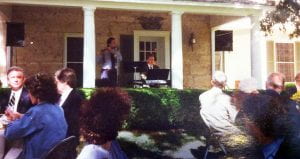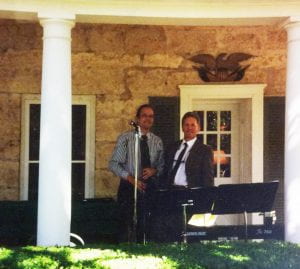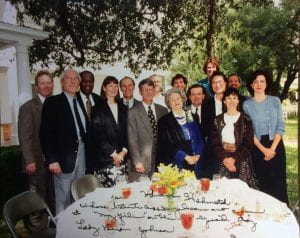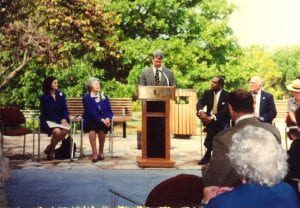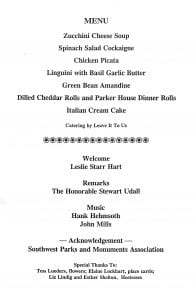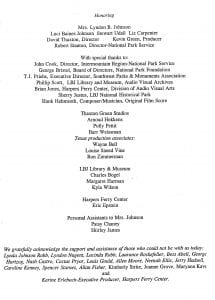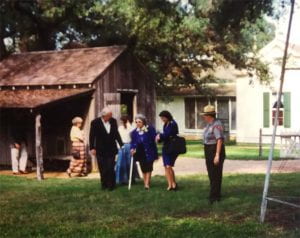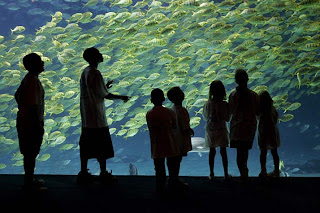Aaron Copland in 1961
In 1974-5, I had the remarkable opportunity to meet and have a lesson with the legendary composer Aaron Copland. At that time, I was immersed in my music studies, completing my undergraduate degree and embarking on my graduate studies. Although I had taken an extra year to finish my undergraduate degree to focus on a recital, I had already accumulated 15 graduate hours towards my Master’s degree. My musical activities were diverse and engaging. I had delved into the extensive piano repertoire of Igor Stravinsky, performing works such as the piano/violin duo version of “L’Histoire du Soldat” on a mini-concert tour. I had also played Three Movt. from “Petrouchka” for James Dick, declined his invitation to be his student, and explored the thrilling 2-piano version of “The Rite of Spring,” arranged by Stravinsky himself, with Tom Wells.
During that time, I was privileged to serve as the director of the New Music Ensemble, which had found a permanent performance space in the Art School surrounded by contemporary art and sculptures. Additionally, I had the opportunity to explore jazz and Middle Eastern music in a band led by the now-conductor Howard Hudiburg. My composition teacher was Karl Korte, who has remained a respected figure in the music world. As a teaching assistant, I had the honor of working with Kent Kennan, who had orchestrated Igor Stravinsky’s visit to Austin in 1967, although I had been in high school and unaware of the great composer at that time.
It was through Karl Korte’s friendship with Aaron Copland that I found myself in a truly unforgettable experience. Copland had arrived in Austin to conduct a performance with the Austin Symphony, and Korte invited him for a luncheon at the Erle Stanley Gardner room in the Academic Center of our school. Only a select few professors were present, and I was asked to attend because I was currently preparing Copland’s Piano Fantasy for performance.
The moment Mr. Copland entered the room at noon, his radiant smile, vibrant energy, and impeccably dressed appearance immediately caught everyone’s attention. After the introductions and handshakes, he approached me with genuine interest and asked me to introduce myself. I humbly stated that I was a student studying piano and composition and that I would be performing his Piano Fantasy. Showing his characteristic enthusiasm, Copland requested that I play it for him, and although I felt a mix of nerves and excitement, I agreed.
Following the luncheon, the group made its way from the Academic Center to the old music building, hastily preparing a large classroom on the second floor for the impromptu performance. Whether it was Copland’s suggestion or a collective assumption, the gathering unexpectedly turned into a private one-on-one lesson. While I can’t recall precisely which sections of the Piano Fantasy I performed, I must admit that my understanding of the piece at that time was quite limited. Nevertheless, Copland’s insightful questions and guidance during our interaction revealed new layers of the composition to me.
At one point, Copland inquired about my passions and interests, and when I mentioned my love for jazz, his eyes gleamed with excitement. He shared his own affinity for jazz and encouraged me to play some for him. Without hesitation, I launched into an F blues, followed by Miles Davis’s iconic tune “So What,” and perhaps a fragment of a ballad, most likely “Stella by Starlight.” Copland’s infectious enthusiasm and warm encouragement instilled a newfound confidence in me. He emphasized the importance of pursuing my dreams and continuing to work diligently.
As our lesson progressed, a mention of Copland’s scheduled rehearsal that afternoon abruptly interrupted our time together. Recognizing the need for him to depart, the lesson came to an abrupt end. However, what remains etched in my memory to this day is the sheer energy in Copland’s speech, his comfortable and engaging conversational style, and the genuine focus he bestowed upon me during our encounter. His willingness to spend time and offer personal inspiration has left an indelible mark on my musical journey.
Reflecting on that experience, I realize that I have subconsciously adopted Copland’s approach in my own teaching today. I strive to provide my students with the same attention, encouragement, and belief in their potential that Copland so generously shared with me. I am immensely grateful for the privilege of meeting Aaron Copland and cherish the lasting impact he has had on my life and career.
Posted by © Time/Space Fabrics
 It was 20 years ago this year that I wrote the music for a documentary celebrating the life and times of Lady Bird Johnson, FLOTUS, First Lady of the United States.
It was 20 years ago this year that I wrote the music for a documentary celebrating the life and times of Lady Bird Johnson, FLOTUS, First Lady of the United States.